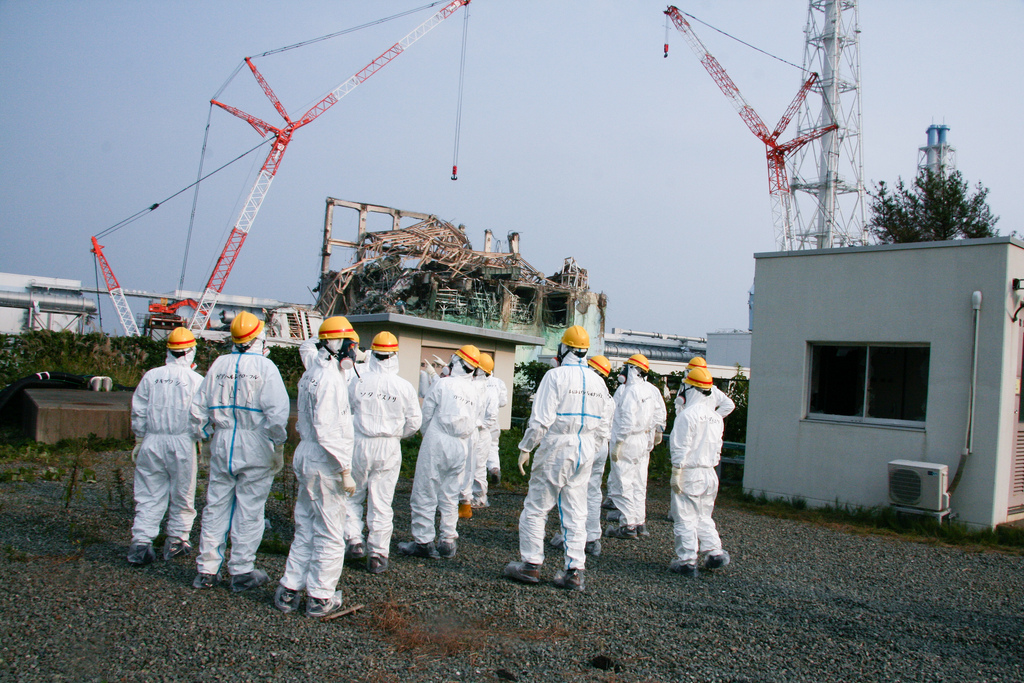

The containment structure is a hermetically (air tight) sealed, very thick structure made of steel and concrete.

This structure is the fourth barrier to radioactive material release. The entire primary loop of the nuclear reactor – the pressure vessel, pipes, and pumps that contain the coolant (water) – are housed in the containment structure. The pressure vessel is the third barrier to radioactive material release. The pressure vessel is a thick steel vessel that operates at a pressure of about 7 MPa (~1000 psi), and is designed to withstand the high pressures that may occur during an accident. The core is then placed in the pressure vessel. The Zircaloy casing is the second barrier to release that separates the radioactive fuel from the rest of the reactor. The solid fuel pellet (a ceramic oxide matrix) is the first barrier that retains many of the radioactive fission products produced by the fission process. These fuel rods are then put together to form assemblies, of which several hundred make up the reactor core. These pellets are then put into a long tube made of Zircaloy (an alloy of zirconium) with a failure temperature of 1200 ☌ (caused by the auto-catalytic oxidation of water), and sealed tight. The fuel is manufactured in pellets (cylinders that are about 1 cm tall and 1 com in diameter). Uranium oxide is a ceramic with a very high melting point of about 2800 ☌. Want to know more about the source of this post? Our member-bloggers are providing ongoing analysis of events unfolding in Japan.įor alerts, please follow us on twitter, sign up for our RSS feed, or visit our home page.

We are an independent, member-driven community of energy and climate study professionals. The nuclear fuel heats water, the water boils and creates steam, the steam then drives turbines that create the electricity, and the steam is then cooled and condensed back to water, and the water returns to be heated by the nuclear fuel. A BWR produces electricity by boiling water, and spinning a a turbine with that steam. The plants at Fukushima are Boiling Water Reactors (BWR for short). We will have to cover some fundamentals, before we get into what is going on.Ĭonstruction of the Fukushima nuclear power plants

The original post written by Dr Josef Oehmen “Why I am not worried about Japan’snuclear reactors.” are being reposted in different languages. The original article was adopted as the authors believed it provided a good starting point to provide a summary background on the events at the Fukushima plant.*** The authors have been monitoring the situation, and are presenting facts on the situation as they develop. Please visit to learn more. ***Note that the title of the original blog does not reflect the views of the authors of the site. Members of the NSE community have edited the original post and will be monitoring and posting comments, updates, and new information. This post originally appeared on Morgsatlarge. Below is an updated version of the original post written by Josef Oehmen. This content has now been edited for accuracy by the MIT scientific community. Editors’ Note: this post was written by a person who knew of nuclear physics but was not a nuclear engineer nor physicist, but an economist.


 0 kommentar(er)
0 kommentar(er)
